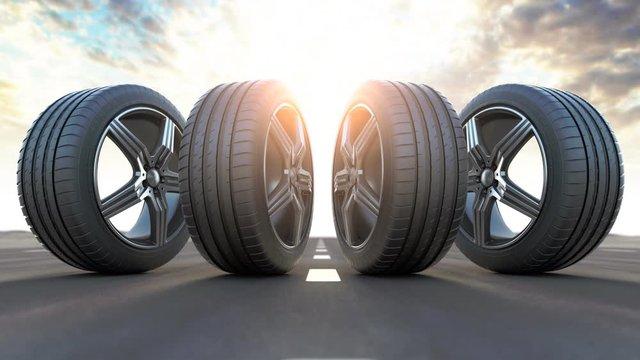When it comes to buying new tyres, most drivers focus on the obvious—brand, tread design, or maybe the price tag. But one important number often gets overlooked: the tyre load index. It’s not the flashiest spec, but it’s one of the most critical for safety, performance, and long-term value.
This guide will help you understand what the tyre load index means, how to find it, and why it’s essential for driving in the UAE.
What Is the Tyre Load Index?
The tyre load index is a number that indicates the maximum weight a tyre can carry when inflated properly. It’s not the same as tyre pressure—this is purely about how much load a single tyre can safely support.
For example, a load index of 91 means the tyre can carry 615 kg. Multiplied by four tyres, that gives you the safe load capacity for your vehicle. Exceed that limit, and you’re looking at higher wear, lower efficiency, and potential safety hazards.
Where to Find the Load Index
You can find the load index printed on the sidewall of any tyre. It’s usually the number that appears after the tyre size. A tyre marked 205/55 R16 91V has a load index of 91 and a speed rating of V.
Here are a few common load index values:
| Load Index | Weight Capacity |
|---|---|
| 88 | 560 kg |
| 91 | 615 kg |
| 94 | 670 kg |
| 100 | 800 kg |
Your vehicle’s manual will include the minimum load index you should use—always follow it.
Why Load Index Matters in the UAE
Driving conditions in the UAE are tough on tyres. High temperatures, long commutes, heavy traffic, and fully loaded SUVs are part of daily life here. Choosing tyres with the correct load index is more than a technical detail—it’s a practical decision.
The wrong load index can lead to:
-
Faster tyre wear
-
Poor fuel efficiency
-
Reduced braking ability
-
Higher risk of blowouts
That’s why many UAE drivers go with trusted brands like Yokohama tyres Dubai, which offer a wide range of models engineered to handle both the heat and the load of local roads.
Is It Okay to Go Higher or Lower?
Using tyres with a higher load index than recommended is usually fine—and sometimes smart if you regularly carry passengers or cargo.
Going lower, however, is not advisable. It can reduce handling performance and even void warranties or insurance in the event of a tyre-related accident.
Load Index vs Speed Rating
Often, the tyre load index is paired with a letter indicating speed rating. While the load index handles weight, the speed rating deals with the maximum safe driving speed. Both numbers need to match or exceed your vehicle’s manufacturer requirements.
Buying the Right Tyres
Don’t just pick the cheapest tyres available. Matching your car’s weight demands is crucial. Yokohama tyres Dubai offers options that are not just built for performance but also rated to carry proper loads in desert conditions.
Whether you drive a compact city car or a fully loaded SUV, there’s a tyre with the right load index for you—just check before buying.
Final Thoughts
Tyre load index might sound like a small thing, but it has a big impact. For UAE drivers, understanding this number ensures safer, more efficient driving.
Next time you’re tyre shopping, don’t just focus on the brand or price. Take a moment to check that load index—and remember, brands like Yokohama tyres Dubai make it easy to find tyres that match your car’s needs without compromising on quality.



